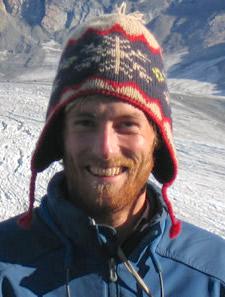Event Date:
Event Location:
- Webb Hall 1100
Dr. Scott Johnston, an Earth Science alum and, now, assistant professor at Cal Poly San Luis Obispo, will give this week's talk at Speakers Club entitled Nacimiento block forearc detrital zircon geochronology and geochemistry: rapid ophiolite exhumation and arc thickening in the southern California Late Cretaceous convergent margin. The talk is at 2:00 PM on Thursday, April 21, 2016 in Webb Hall 1100.
Abstract:
The California Mesozoic margin represents an archetypical convergent margin, and numerous structural, geochronologic and geochemical studies have helped to characterize its tectonic evolution. Still, a variety of important first-order questions remain unsolved including details related to the relationships between forearc and retroarc deformation, the source regions and mechanisms of magma genesis, and the triggers of magmatic flare-up events. We present coupled U–Pb geochronology and geochemistry measured by laser ablation split stream ICPMS on detrital zircons from Nacimiento block forearc sediments from the Central California coast to augment existing petrologic datasets with time-transgressive averages of the geochemical characteristics of the evolving Cordilleran arc.
1972 zircon grains from 23 Nacimiento forearc sandstones indicate an increasing component of detritus from the growing Mesozoic arc, and define three periods of high magmatic flux in the Mesozoic arc during the Permian (270–250 Ma), the Jurassic and Early Cretaceous (170–135 Ma), and the Late Cretaceous (115–85 Ma). Grains from Late Cretaceous sediments are overwhelmingly dominated by zircon from the Late Cretaceous arc. Zircon from the Permian arc is the least abundant of the three magmatic pulses, although they consistently display elevated Yb/Gd and U/Yb. Jurassic zircon displays discrete geochemical populations: grains with low U/Yb characteristic of MORB zircon (177–158 Ma), whereas grains with higher U/Yb characteristic of continental zircon are alternately defined by low Eu* (177–158 Ma), enriched LREE and Th/U (177–145 Ma), and high Eu* (145–135 Ma). Late Cretaceous zircon displays gradually increasing U/Yb, Th/U and LREE from 110–80 Ma, with abruptly decreasing Yb and increasing Eu* at 102 Ma.
Jurassic MORB zircon is concentrated in Nacimiento forearc sandstones with depositional ages of 102–97 Ma suggesting rapid exhumation and denudation of Jurassic ophiolite in the forearc/arc at this time. Abruptly decreasing Yb and increasing Eu* in Late Cretaceous zircon are suggestive of an eclogitic residue and a deeper arc magma sources at 102 Ma, and is coincident with Jurassic ophiolite exhumation. These observations are consistent with 1) gradual growth of the accretionary prism and exhumation of outer forearc by 102 Ma, 2) intra-arc shortening during the Late Cretaceous magmatic flare-up, and 3) subsequent shortening of the Nacimiento forearc along the Sur−Nacimiento fault.

